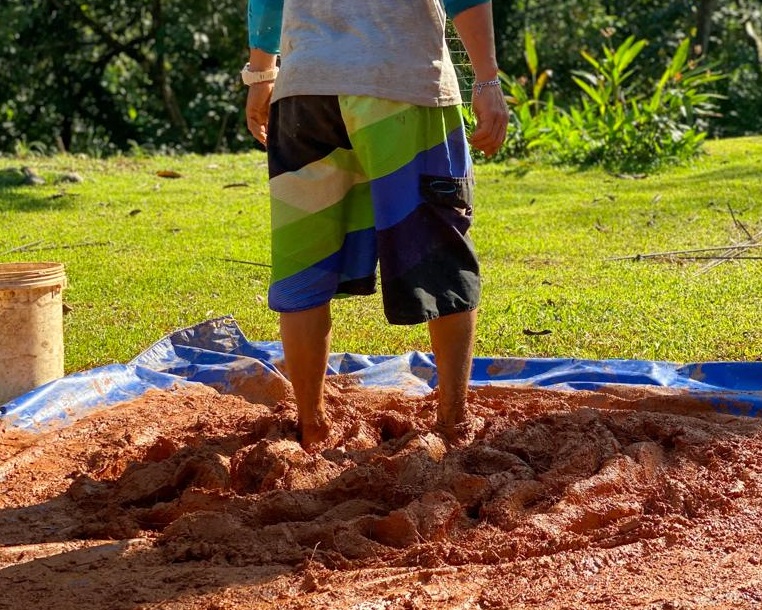In the fabric of our country, we have been taught to revere concrete, metal, and PVC as pillars of modern construction. These materials, with their promise of durability and strength, have been elevated to an unreachable pedestal. Large corporations, with their glossy advertisements and seductive slogans, have managed to box our aspirations into a frame of steel and cement. However, beneath this veneer of modernity, the ancient call of earth, wood, and bamboo has been silenced, relegated to oblivion by a wave of progress that rarely questions its own path.
Concrete, in its creation process, consumes vast amounts of energy and releases gases that poison our air, while PVC releases dioxins and other contaminants that seep into our waters. Concrete, with its cold and dense embrace, can block the vital exchange between our bodies and the natural world, blurring the line between mental and physical balance. This cacophony of synthetic materials and their shadows of pollution eclipses the gentler, more harmonious alternatives that, for centuries, were humanity’s faithful companions in building its shelters.
In contrast, during eras of ancestral wisdom, earth, wood, bamboo, and stone were the materials of choice. These gifts from nature, available without the need for sophisticated machinery or electric transport, offered an intimate connection with the environment. Construction was an act of love and respect for the earth, a reflection of balance and simplicity.
Today, bio-construction revives that forgotten wisdom, blending it with modern engineering and architectural knowledge. Imagine a home that, as it rises, does so with minimal environmental impact and profound respect for natural resources. Bio-construction is not merely a return to ancestral techniques; it is a reinterpretation of those methods through the lens of current technology. It becomes a bridge between the past and the present, where energy efficiency and social well-being are harmoniously intertwined.
Bio-construction redefines itself as a symphony of low environmental impact and high social efficiency. This approach embraces related disciplines such as geobiology and Feng Shui to balance the environment, while organic and biodynamic farming enhance productivity. Rainwater harvesting and the reuse of discarded materials are not just sustainable practices but manifestations of a vision that prioritizes balance and efficiency.
A brilliant example of this vision is the "Earthship," a creation by American architect Michael Reynolds. In the southernmost corners of Ushuaia, Argentina, these self-sufficient and sustainable homes demonstrate how creativity can transform discarded materials—like cans, tires, and bottles—into cozy and efficient shelters. With integrated organic gardens and a design that minimizes the need for energy-intensive heating or cooling systems, the "Earthship" unveils a path to a future where construction and sustainability dance in unison.
Although bio-construction in our country is still in its infancy, its growing presence promises a radical transformation. In an era where building a home seems like a utopia unless we incur decades of debt, bio-construction offers renewed hope. It invites us to rethink our practices, to return to a way of building that is not only economical but also respectful of the environment and healthy for humanity.
Thus, the echo of ancient materials resounds with new life, inviting us to reimagine the future of construction. On the horizon of our country, bio-construction rises as a beacon of hope, a symbol of a future where the creation of our shelters becomes a harmonious dance between nature and innovation.
To learn more about this vision and join the movement toward a more sustainable future, contact us via Facebook or email us at: inca33@gmail.com. Together, we can build a tomorrow where every home is a testament to balance and respect for the world around us

